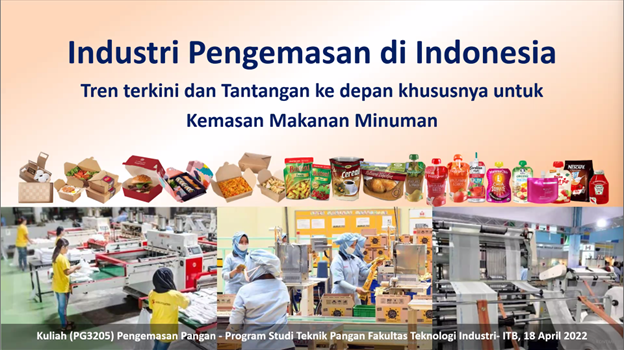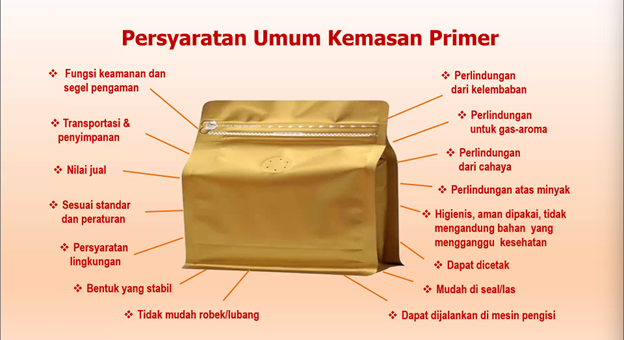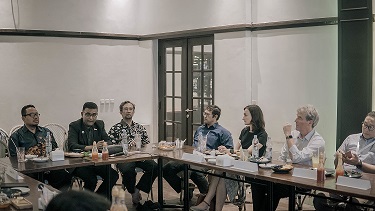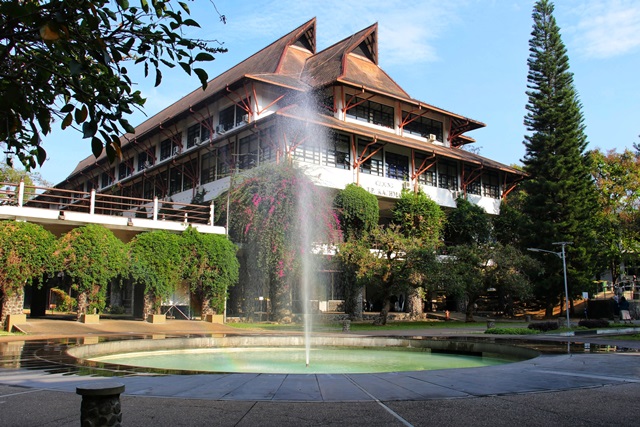Trends and Opportunities of the Packaging Industry in Indonesia
By Adi Permana
Editor Adi Permana

BANDUNG, itb.ac.id – Indonesia's food industry shows a promising future. Recently, food demand in the country went through a drastic escalation, especially those coming from the packaging industry. To prolong the products' shelf lives, technologies utilized in packaging are essential for later consumption.
In the past, food was limited in certain regions. Nowadays, the advancement of global expeditions improves access to food products in all corners of the world. This opportunity paved the way for the food industry to emerge as a multinational initiative. Discussing the industry's endeavors, the PG3205 class of the ITB Food Engineering Study Program invited Ariana Susanti as a guest lecturer.
Ariana works as a business development director at IPF (Indonesian Packaging Federation), a non-profit organization that focuses on packaging technology. Her presentation titled “Packaging Industry in Indonesia: Current Trends and Future Challenges of Food and Beverage Packaging” was shared on Monday, 18 April 2022.
Ariana stated that packaging is necessary to preserve the longevity of food. Those that are safe for consumption will not change their color, flavor, and smell when packed. Moreover, product packaging is no longer restricted to its functionality; its designs are based on other aspects. For instance, the economic facet may affect the brand's image.
Different food products use different methods and materials for their packaging, depending on their shelf lives. Factors that affect food spoilage are the presence of microorganisms, enzymes, light, temperature, and more. Hence, determining a suitable material is crucial for a more efficient food packaging procedure.
“Good packaging guarantees the safety, logistics, marketing, cost, and impact to the environment. There are many kinds of packaging with different criteria applied to food and beverages. These criteria are known as the standards set by related parties,” she added.
The rising societal awareness of the environment drives the support for safer and more sustainable product packaging. Minimalistic packaging, for example, is preferred because it is estimated to be fresher. Nonetheless, six elements are established as foundations in devising the required packaging: better, faster, safer, cheaper, smarter, and greener.

Features implemented on the packaging are no longer bound to the list of ingredients and nutritional values. Many industries offer innovations such as QR codes that contain various information regarding the products.
Indonesia's consumer expenditure is insufficient, resulting in food packaging being overlooked. Additionally, the sharp market fluctuation caused by the COVID-19 pandemic leads to logistical complications throughout 2021 that burden demand for packaging materials.
“Reflecting on the available prospects in Indonesia, the packaging industry maintains a strategic market and exhibits significant trends. This can be observed from the rise of e-commerce which requires special packaging for shipping. Consumption of frozen food that has a longer expiration date is also an alternative option for most people,” Ariana explained.
Reporter: Lukman Ali (Mechanical Engineering, 2020)
Translator: Ruth Nathania (Environmental Engineering, 2019)

.jpg)
.png)
.jpg)
.jpg)
.jpg)


